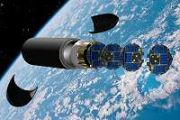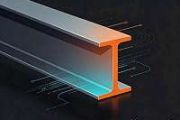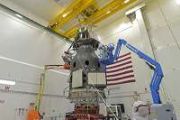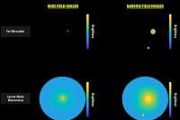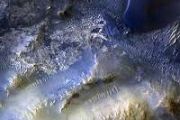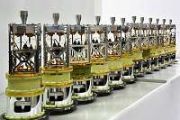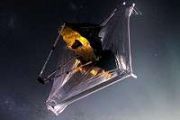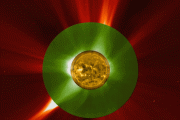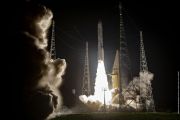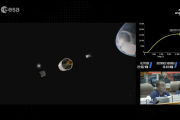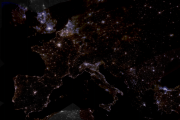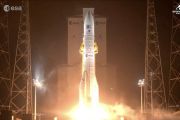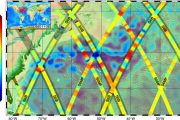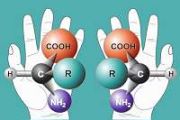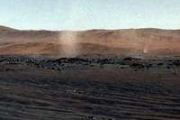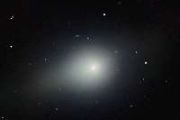
Copernical Team
Weightless on Earth: Preparing astronauts for microgravity

NASA fuels moon rocket in leak test ahead of next launch try

New Webb image captures clearest view of Neptune's rings in decades

Mars is littered with 15,694 pounds of human trash from 50 years of robotic exploration

People have been exploring the surface of Mars for over 50 years. According to the United Nations Office for Outer Space Affairs, nations have sent 18 human-made objects to Mars over 14 separate missions. Many of these missions are still ongoing, but over the decades of Martian exploration, humankind has left behind many pieces of debris on the planet's surface.
I am a postdoctoral research fellow who studies ways to track Mars and Moon rovers. In mid-August 2022, NASA confirmed that the Mars rover Perseverance had spotted a piece of trash jettisoned during its landing, this time a tangled mess of netting. And this is not the first time scientists have found trash on Mars. That's because there is a lot there.
Maxar awarded G-EGD contract renewal to provide mission-ready imagery for US Govt
 Maxar Technologies (NYSE:MAXR) (TSX:MAXR), provider of comprehensive space solutions and secure, precise, geospatial intelligence, has been awarded an Option Year 3 contract renewal by the U.S. National Geospatial-Intelligence Agency (NGA) for the Global Enhanced GEOINT Delivery (G-EGD) program. The contract, which began September 1, 2022, is valued at $44 million. This is the third of three opt
Maxar Technologies (NYSE:MAXR) (TSX:MAXR), provider of comprehensive space solutions and secure, precise, geospatial intelligence, has been awarded an Option Year 3 contract renewal by the U.S. National Geospatial-Intelligence Agency (NGA) for the Global Enhanced GEOINT Delivery (G-EGD) program. The contract, which began September 1, 2022, is valued at $44 million. This is the third of three opt MDA announces second commercial sale of space robotics technology to Axiom Space
 MDA Ltd. (TSX: MDA), a leading provider of advanced technology and services to the rapidly expanding global space industry, has announced the second commercial sale of its products derived from Canadarm3 technology to Axiom Space.
The new contract is for the delivery of 62 payload interface pairs for Axiom Space's Axiom Station. The interfaces will provide mechanical, electrical, and data
MDA Ltd. (TSX: MDA), a leading provider of advanced technology and services to the rapidly expanding global space industry, has announced the second commercial sale of its products derived from Canadarm3 technology to Axiom Space.
The new contract is for the delivery of 62 payload interface pairs for Axiom Space's Axiom Station. The interfaces will provide mechanical, electrical, and data Redwire, Bradford Space and SSC to jointly develop commercial orbital debris removal service
 Redwire Corporation (NYSE: RDW), a leader in space infrastructure for the next generation space economy, has signed a memorandum of understanding (MOU) with both Bradford Space and the Swedish Space Corporation (SSC) to develop a commercial orbital debris removal service. Through this collaboration, Redwire will expand the development team and add extensive space robotics and guidance, navigatio
Redwire Corporation (NYSE: RDW), a leader in space infrastructure for the next generation space economy, has signed a memorandum of understanding (MOU) with both Bradford Space and the Swedish Space Corporation (SSC) to develop a commercial orbital debris removal service. Through this collaboration, Redwire will expand the development team and add extensive space robotics and guidance, navigatio Researchers at SLAC use purified liquid xenon to search for mysterious dark matter particles
 Sitting a mile below ground in an abandoned gold mine in South Dakota is a gigantic cylinder holding 10 tons of purified liquid xenon closely watched by more than 250 scientists around the world. That tank of xenon is the heart of the LUX-ZEPLIN (LZ) experiment, an effort to detect dark matter - the mysterious invisible substance that makes up 85% of the matter in the universe.
"People hav
Sitting a mile below ground in an abandoned gold mine in South Dakota is a gigantic cylinder holding 10 tons of purified liquid xenon closely watched by more than 250 scientists around the world. That tank of xenon is the heart of the LUX-ZEPLIN (LZ) experiment, an effort to detect dark matter - the mysterious invisible substance that makes up 85% of the matter in the universe.
"People hav Wagner Corp teams with Virgin Orbit to bring air-launch capability to Australia
 Virgin Orbit (Nasdaq: VORB), a leading launch provider, has signed a Memorandum of Understanding (MOU) with Wagner Corporation, one of the region's most successful privately-owned companies and proprietor of the Toowoomba Wellcamp Airport and Business Park in Queensland, Australia. The agreement will allow the companies to begin the process of implementing a national launch capability from Austr
Virgin Orbit (Nasdaq: VORB), a leading launch provider, has signed a Memorandum of Understanding (MOU) with Wagner Corporation, one of the region's most successful privately-owned companies and proprietor of the Toowoomba Wellcamp Airport and Business Park in Queensland, Australia. The agreement will allow the companies to begin the process of implementing a national launch capability from Austr SpinLaunch closes $71M Series B funding round
 SpinLaunch reports that the company has closed a $71 million Series B funding round. The funds will be used to continue the development and commercialization of the world's first kinetic launch system and satellite product line, designed to provide low-cost, high-cadence, environmentally responsible space access.
The round was led by ATW Partners, and includes Kleiner Perkins, GV, ATMA Cap
SpinLaunch reports that the company has closed a $71 million Series B funding round. The funds will be used to continue the development and commercialization of the world's first kinetic launch system and satellite product line, designed to provide low-cost, high-cadence, environmentally responsible space access.
The round was led by ATW Partners, and includes Kleiner Perkins, GV, ATMA Cap 

